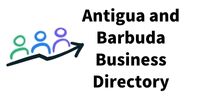Lead generation means finding people or businesses who are interested in your products. You get their contact info to sell them later. This b2b email list process is key for B2C (Business to Consumer) and B2B (Business to Business). In digital marketing, lead generation is done online. It helps grow your business fast.
But here’s the problem—many marketers are doing it the wrong way. They are overloading contacts with messages. This causes what we call “lead poisoning.” Let’s explain.
What Is “Lead Poisoning” in Marketing?
Lead poisoning in marketing is not a health issue. It means damaging good leads by using bad marketing methods. For example, if you send too many emails too fast, leads will ignore you. Or they will block you. You lose a customer.
Each generation reacts differently. That’s why you need to understand your audience by generation. Use the right method for each group. Let’s look tools for creating a product backlog at how each generation sees digital marketing.
Baby Boomers (Born 1946-1964)
They prefer trust and strong relationships. Don’t push them with aggressive emails. Use phone calls and detailed content. Baby Boomers still read newsletters. They like facts and value.
Introduction: What Is Lead Generation?
Use telemarketing with respect.
Send well-written emails.
Offer webinars or free guides.
Generation X (Born 1965-1980)
They are smart buyers. .
Use a mix of emails and social media.
Give special deals or free trials.
Use your telemarketing data to follow up.
Millennials (Born 1981-1996)
Focus on Instagram, TikTok, and email.
Send short videos or GIFs.
Use lead magnets like free downloads.
Generation Z (Born 1997-2012)
They are mobile-first users. They hate united states business directory phone calls. They like fun, fast, and visual content. You must be creative and real with them.
Use Snapchat, TikTok, and YouTube.
Don’t sell too much—entertain them.
